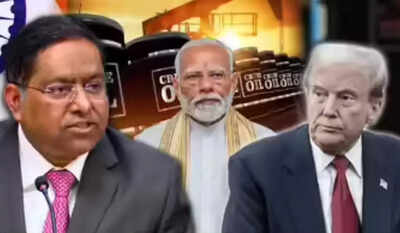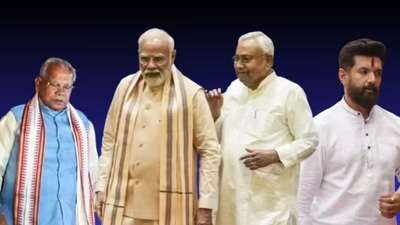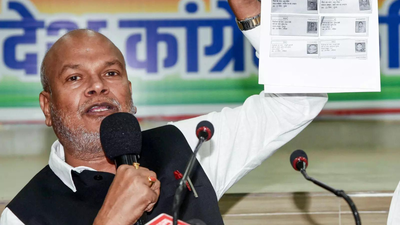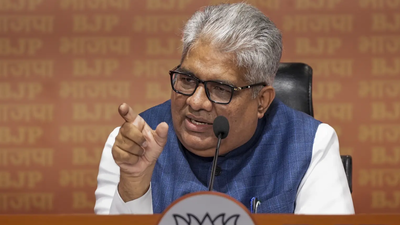Random Musing: Why Swami Vivekananda batted for football | India News
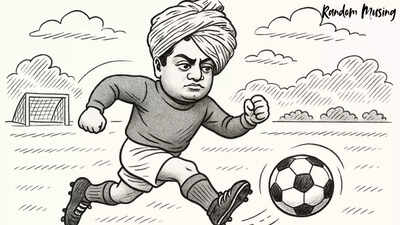
It’s interesting how Swami Vivekananda is intrinsically linked to the United States of America. He gave his iconic Sisters and Brothers of America speech on September 11, 1893, and he declared independence from the physical form binding us to this world on July 4, the day America declared its independence from tea.Swami Vivekananda was not just a monk in saffron robes but the roaring voice of Vedanta, the philosophy of non-dualism that sees everything as Brahman – the universal consciousness. To him, realising that ‘Thou art That’ (Tat Tvam Asi) required more than intellectual assent; it needed inner strength and outer fearlessness.But in popular culture, Swami Vivekananda is oft-remembered for another maxim which is widely misquoted, misused and misunderstood: “You will be nearer to heaven through football than through the study of the Gita.”It sounds like Swami Vivekananda Diego over dharma, but those who read that line and stop there prove precisely why he said it in the first place.It is as misunderstood as Karl Marx’s “religion is the opium of the masses,” which, as Kurt Vonnegut pointed out, for its time and place was like saying religion is like aspirin. It just gave people a little peace in troubled times.

The same goes for Swami Vivekananda, whose full quote goes: “First of all, our young men must be strong. Religion will come afterwards. Be strong my young friends; that is my advice to you. You will be nearer to heaven through football, than through the study of the Gita. These are bold words; but I have to say them for I love you… You will understand the mighty strength of Krishna better with a little strong blood in you.”For Vivekananda, this was Vedanta in action. The Gita is spoken on a battlefield, it’s not a sermon in a cave though it does make one think of the Plato’s Man in the Cave in a different way.Strength, courage, and righteous action (Karma Yoga) are inseparable from spiritual realisation. His guru, Sri Ramakrishna Paramahamsa, taught that while the world is Maya (illusion), it is also Lila (divine play). Vivekananda extended this by saying: if life is divine sport, then play it with muscles of iron and nerves of steel.He was not dissuading the study of the Gita or any form of Vedanta but challenging a society that valued philosophy and priests over robust bodies. Spiritual enlightenment went hand-in-hand with physical entelechy. Arjuna could follow his dharma because his body and mind were honed to only see the eye of the bird. Partha’s inner conscience just needed a little prodding to follow his dharma.This is deeply Vedantic.Advaita teaches that while the Atman is untouched by the world, it is through the body-mind complex that one pursues sadhana (practice) towards self-realisation. A trembling body leads to a restless mind; a restless mind never knows its true Self.And this was not mere gym bro motivation, but civilisational strategy. A weak man cannot demand peace, only a strong one can. When he walked barefoot across India, sleeping under trees, sharing stale rotis with starving farmers, he saw a civilisation wounded by colonialism yet radiant with eternal wisdom.It was Ramakrishna who taught him to see divinity everywhere – in stone, in man, in beast. But Vivekananda declared that divinity must be expressed through strength. Worshipping gods in temples while neglecting the god within – the Atman – was a betrayal of Vedanta itself.He knew that political freedom would come only when psychological freedom was won.The reason his Chicago speech stuck the landing was because he didn’t seek validation. He spoke as the intellectual and ecumenical descendant of a civilisation that had pondered infinity when Europe was a Monty Python skit.He said: “We believe not only in universal tolerance, but we accept all religions as true.” It was an intellectual hammer blow to Western Judeo-Christian superiority that viewed Hinduism as pagan superstition. In one single sentence, he shattered that false notion.He showed them an India that had room for all gods because it saw divinity in everything. An India where difference wasn’t a threat but an expression of cosmic diversity.But Vivekananda wasn’t a romantic nostalgic. He called for India’s material revival too. He demanded science, industry, and technology – not to become Europe’s clone, but to stand on her own feet. He said: “What good is spirituality if it leaves you begging?”For him, dharma wasn’t renunciation. It was righteous action.That’s why he told his young disciples: “You will understand the Upanishads better when your body stands firm upon your feet, and you feel like men.”That is why he thundered: “Strength, strength it is that we want so much in this country. Strength in every way. Strength is life, weakness is death.” For him, football was not merely sport; it was a training ground for Karma Yoga – action without attachment, courage without arrogance.And if he saw modern India today, where children are glued to their phones in TikTok zombification, he would thunder again: “Drop your phone. Pick up a ball. Close the app. Open the field.”For it is only when you can run without gasping, fight without fear, and stand without trembling, that you can meditate without distraction. Heaven is not at the end of a penalty kick, but worship begins with the worship of life itself. Swami Vivekananda changed how the world perceived India. Before him, India was a land of temples and famines, spices and beggars. After him, India was the land of Vedanta – of spiritual giants who spoke of universality, of divinity within each soul, of the world as one family. He forced Harvard professors to listen, industrialists to rethink, and Western missionaries to introspect.But perhaps his greatest gift was to India herself. He made her see her own strength. He taught her that freedom will never be granted by the West. It must be taken by Indians who stand tall with muscles of iron and nerves of steel. So the next time someone forwards you his quote about football and the Gita, tell them it wasn’t about Messi or Mahabharata. It was about building a civilisation of warriors who pray with their actions and meditate with their courage.As Vedanta teaches, moksha is not an escape from life but the fearless embrace of it. And as Ramakrishna showed, devotion is fulfilled not in passive prayer but in joyful, courageous living. Because for him, that goal wasn’t just moksha in another world. It was dignity, freedom, and fearlessness in this one. And then one can proudly say, with a stout body and spiritual mind: Aham Brahamsmi.

